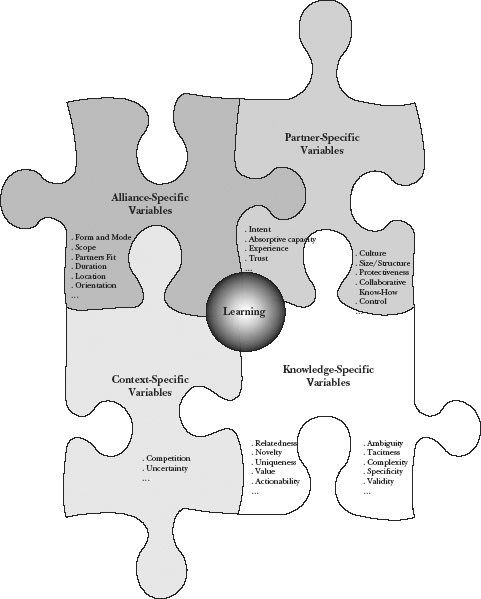Collaborative Learning
Mapping the field
From our prior discussion, it is evident that a great deal of interesting research is taking place. However, it is also clear that most empirical studies in this area focus on a few specific explanatory variables, sometimes on an ad hoc basis, providing only a partial explanation to the overall phenomenon. Moreover, different streams of research have their own norms about levels of analysis data and variables. While each study has the potential to add to our comprehension of a given facet of alliance learning, it also contributes to the fragmentation of our understanding. The big picture is lost.
To address this problem, we propose a generic taxonomy of variables related to the ‘how?’ question in Figure 27.1. Four distinct blocks of explanatory variables compose this conceptual framework and help organize logically variables of interest: (1) alliance-specific variables, (2) partner-specific variables, (3) knowledge-specific variables, and (4) context-specific variables.
Figure 27.1 Learning and Alliances: Theoretical Building Blocks

For each block, we provide a list of pertinent variables. Lists are illustrative rather than exhaustive. The first block, alliance-specific variables, refers to many of the variables we have already introduced and discussed that may facilitate or impede the learning process. For instance, the importance of the ...
Get Handbook of Organizational Learning and Knowledge Management, Second Edition now with the O’Reilly learning platform.
O’Reilly members experience books, live events, courses curated by job role, and more from O’Reilly and nearly 200 top publishers.

